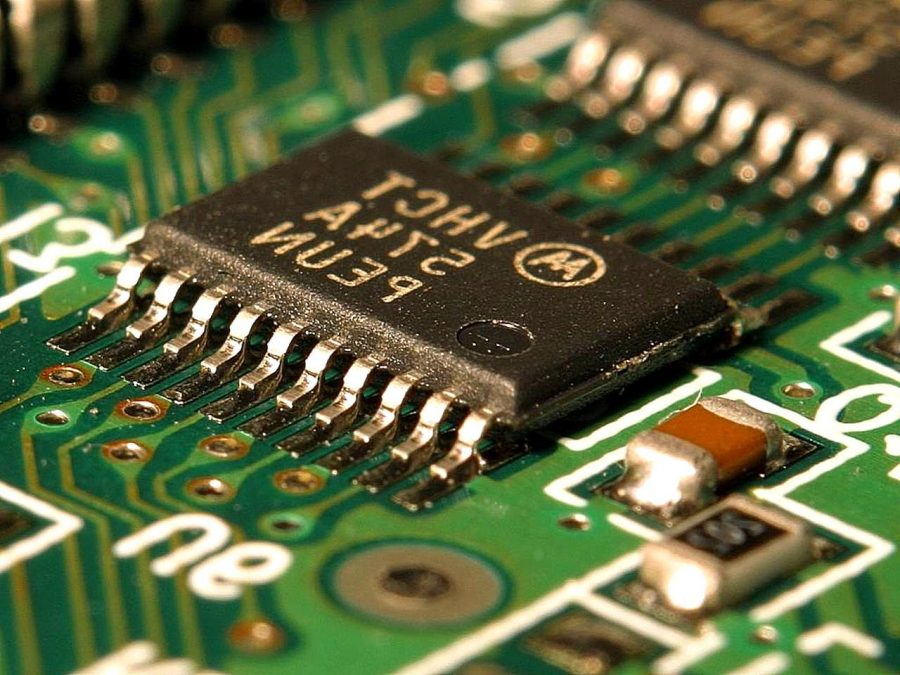Apple’s New Chip and Why You Should Care
The M1 Chip, Apple’s New Baby
If you have not been following the consumer electronics world recently, the news of Apple finally making the switch to the new ARM M1 CPU architecture did not reach you. If that means nothing to you, then you are in luck as I am about to explain what exactly the M1 chip is. If you are as enthused about technology as I am, then even better. It is time for some background information.
What exactly is the M1 chip?
Depending on your technological knowledge, you may or may not know what a CPU is. A CPU, or Central Processing Unit, is a piece of machinery found in devices. Including phones, laptops, desktops, Raspberry Pi’s (small computers with a single board developed in the United Kingdom to teach computer science), a CPU is what functions as a computer’s “brain.” The main functions of a CPU, to put it incredibly simply, is that it is responsible for processing data and instructing the computer’s components regarding what actions to execute. If you wish to delve in CPUs more, check out this Khan Academy Article which explains it better than I can. So what is so special about this M1 chip? In the past, Apple has used a variety of CPUs called x86. x86 is a CPU architecture that is found in the vast majority of laptops and desktops. Chances are that if you own a laptop, it possesses an x86 chip. This new chip, however, does not employ the x86 architecture. Instead, the Apple M1 chip uses the ARM chip architecture. ARM is an abbreviation for Advanced RISC (Reduced Instruction Set Computer) Machine. I know, abbreviations within abbreviations, computer vernacular is inordinately convoluted. Whereas x86 chips are found almost entirely in laptops and desktops, ARM chips dominate the smartphone market. Practically every smartphone, barring a few isolated exceptions, uses a chip with ARM architecture. If you have an iPhone in your hand right now, it has an ARM chip in it.
How does this benefit me?
As you understand, Apple has got a fancy new chip. It may seem irrelevant, but Apple’s M1 chip has some significant advantages over the Intel branded x86 chips they were previously using. The first is regarding battery life. As ARM chips tend to be simpler than their x86 counterparts, they are considerably more power-efficient. Now, your laptop is going to last significantly longer before you have to bust out the power brick. Another benefit of using an ARM chip is that Mac computers equipped with them can run mobile apps by default. As mobile apps are obviously designed to work with mobile chips, they can run easily on ARM-based Macs. So if you have ever wanted to run your favorite mobile game on a Mac, or play with Apple’s new Arcade service on your computer, it is now possible. On the other hand, if you are a developer, you are going to have an easier time building cohesive apps that work on multiple platforms. Being that most of the readers of this story are not developers, the predominant benefit for most will be enhanced compatibility. Imagine if you could write in Notability (an application in which you can take notes and edit documents) on your tablet and have it show up instantly, or even simultaneously, in the Notability app on your computer. There is already a method of doing this, but the ARM chip expedites the process. The last benefit of Apple’s chip swap is that of system-wide integration. Most people are aware that their Apple products work well together. For instance, when you take out your Airpods from their case, your phone immediately knows to connect to them. When you put away your Airpods, your Beats products may automagically connect instead. Apple has a propensity for compatibility wizardry and when Apple integrates the M1 into their entire lineup of products, that compatibility will be extended to the interior processes of their computers as well.
Competition In a Changing Marketplace
Believe it or not, Apple was not the first company to execute the integration of ARM chips into their laptops. Both Samsung and Microsoft have experimented with ARM in the past, with Microsoft releasing the Surface Pro X in October of 2019 and Samsung announcing their Galaxy Book S in 2019 as well. The Book S was eventually released in summer 2020. However, neither of these products proved to be nearly as popular as their creators had hoped. The Surface X suffered from application compatibility issues, resulting in many staple apps such as Adobe’s Photoshop being entirely unusable. This was especially disappointing, given how Microsoft marketed the machines as a premium productivity-focused device, with all of the bells and whistles found on “full PCs.” Though Samsung has opted for a less grandiose angle with the Galaxy Book, it still has not sold nearly as well as they would have liked. Hopefully, Apple’s new devices will help to spark additional innovation in the nascent ARM-powered device niche, giving consumers greater choice and access to more polished products. For now, though, Apple’s new products powered by the M1 should keep consumers satisfied.

Hi, I’m Jude and I’m the Senior Editor-at-Large for Iolani’s Imua publication. I’ve been at Imua since my Freshman year, meaning that I’ve been...










